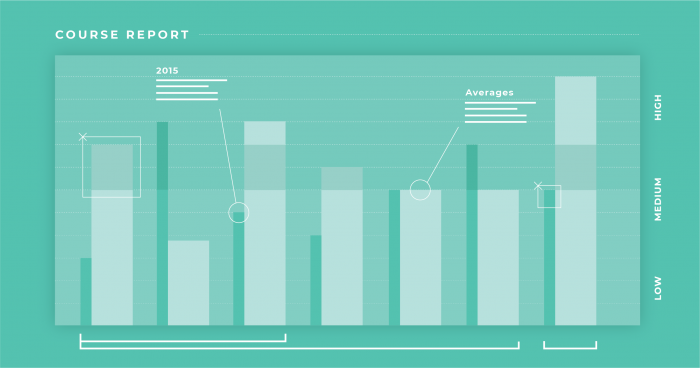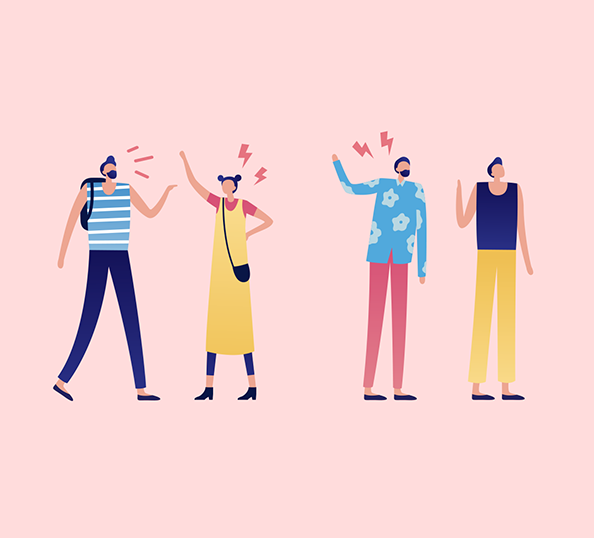Your creative portfolio means nothing if your friends and your mom are the only ones who ever see it.
If you’re a creative, you probably know that traditional job-searching advice is a little, well, traditional. You can format your resume, ask all the right interview questions, even wear just the right black t-shirt—but ultimately, it’s your work that does the talking. Which makes sense: If your job is to create stuff that’s supposed to be seen by people, you’re gonna hire people by looking at the stuff they’ve created.
Whether you’re applying for a job as a copywriter, art director, or any other role at a creative agency, your portfolio is your most important asset. But, showing off your best work is only half the challenge. (We know, you just spent 50+ hours updating your portfolio!) The other half is making sure the right people see it.
We asked a few experienced recruiters where and how they find potential hires. Some of the recruiters work at creative agencies, and others work at the staffing agencies that help creative agencies fill up. (There’s probably an agency that helps the creative agency find the staffing agency!) So keep making good work and making a cool site that shows it off. And then make sure you put it in places where expert recruiters like these can find it.
Where Recruiters Find Candidates
“Here at Barkley, about half of our candidates so far this year have come from what we call our ‘pipeline.’ That consists of internal referrals, folks that we’ve interacted with in past positions, and partners that are returning back to Barkley after a stint at another company. We also use LinkedIn Recruiter heavily, and are involved in local and national recruiting events through AAF, 4A’s, and more.”
—Kate Moore, Recruiting Manager at Barkley
For those who are looking for a job, I think having informational interviews with anyone would help them to get connections and maintain a good relationship with people in the profession. So that’s how you can get referred.
“For creative roles, I find potential hires by sourcing through work that I like and see out in the media, through LinkedIn, and through referrals.”
—Lindsey Lake, Senior Recruiter at TBWA/Chiat/Day
“There are few channels. One of them would be referrals, definitely. For those who are looking for a job, I think having informational interviews with anyone would help them to get connections and maintain a good relationship with people in the profession. So that’s how you can get referred.
I definitely look at applications—the ones that have been super actively applying. I also look through LinkedIn Recruiter. Specifically for me, I prefer social media. For example, Facebook groups, and even sometimes on Slack there are some [groups of social media professionals], too.”
—Mabel Liang, Senior Recruiter at Ogilvy
“Our new hires come from 80% LinkedIn searches, 5% people who reach out via LinkedIn, 5% reactivated candidates and 10% referrals.”
—Natalie Motto, Creative Recruiter at Syndicatebleu
“Here at Artisan, we have our own database and most of our potential hires come from registering on our site but we also source through LinkedIn and networking events.”
—Laila Santiago, Creative Recruiter at Artisan Talent
How to Increase the Odds of Landing an Interview
“I think being proactive definitely helps. Another way is forming connections within the industry. If someone is very interested in working for the social media team here, then maybe they can also join certain forums or reach out to people actively and really just build a relationship. And you may not immediately see a fit. There have been chances with those we just stay in touch with that. Eventually though, if there’s something that’s suitable, we’ll still reach out to stay connected.”
—Mabel Liang, Senior Recruiter
Research the company, share your values and be your best professional self—culture fit is important as well. It’s important to always create a great first impression!
“Keep your recruiter updated on your availability, check in with them regularly and keep your portfolio/resume up to date.”
—Natalie Motto, Creative Recruiter
“Research the company, share your values and be your best professional self—culture fit is important as well. It’s important to always create a great first impression!”
—Laila Santiago, Creative Recruiter
The Stuff They’re Tired of Seeing
“Sometimes people apply for too many jobs. I would like to see someone apply for maybe like, two or three. And see that this person is being serious about this position and is very interested in Ogilvy. That’s a good sign. If I see someone applied to like, 20 plus jobs, it’s a little bit tougher to decide what this person’s looking for.
I think being proactive is great, but it’s different from being super aggressive. Follow-ups are good—just being communicative and professional. That would be a very positive experience on both ends. We also check social media and stuff, [so avoid] anything that’s too crazy, like drunk posts or something.”
—Mabel Liang, Senior Recruiter
“I’d always encourage anyone interviewing at any company to do a minimal amount of research about the organization. We don’t expect you to have a dossier on Barkley, but please don’t ask us if we’re an insurance company.”
—Kate Moore, Recruiting Manager
The Top Three Non-Portfolio Things They’re Looking For
“I’m looking for someone who has a strong point of view, is thinking out of the box, and is passionate.”
—Lindsey Lake, Senior Recruiter
Someone curious, someone brave, and someone who likes to think out the box and propose the ideas. Just very collaborative. Ogilvy across the board is very collaborative environment.
“Someone who’s adaptable, talented and transparent.”
—Natalie Motto, Creative Recruiter
“Long term potential, enthusiasm and passion, and putting their skills to action.”
—Laila Santiago, Creative Recruiter
“Anecdotes about accountability, eagerness and willingness to learn, and the ability to think beyond your role only within the agency.“
—Kate Moore, Recruiting Manager
“Someone curious, someone brave, and someone who likes to think out the box and propose the ideas. Just very collaborative. Ogilvy across the board is very collaborative environment.”
—Mabel Liang, Senior Recruiter



